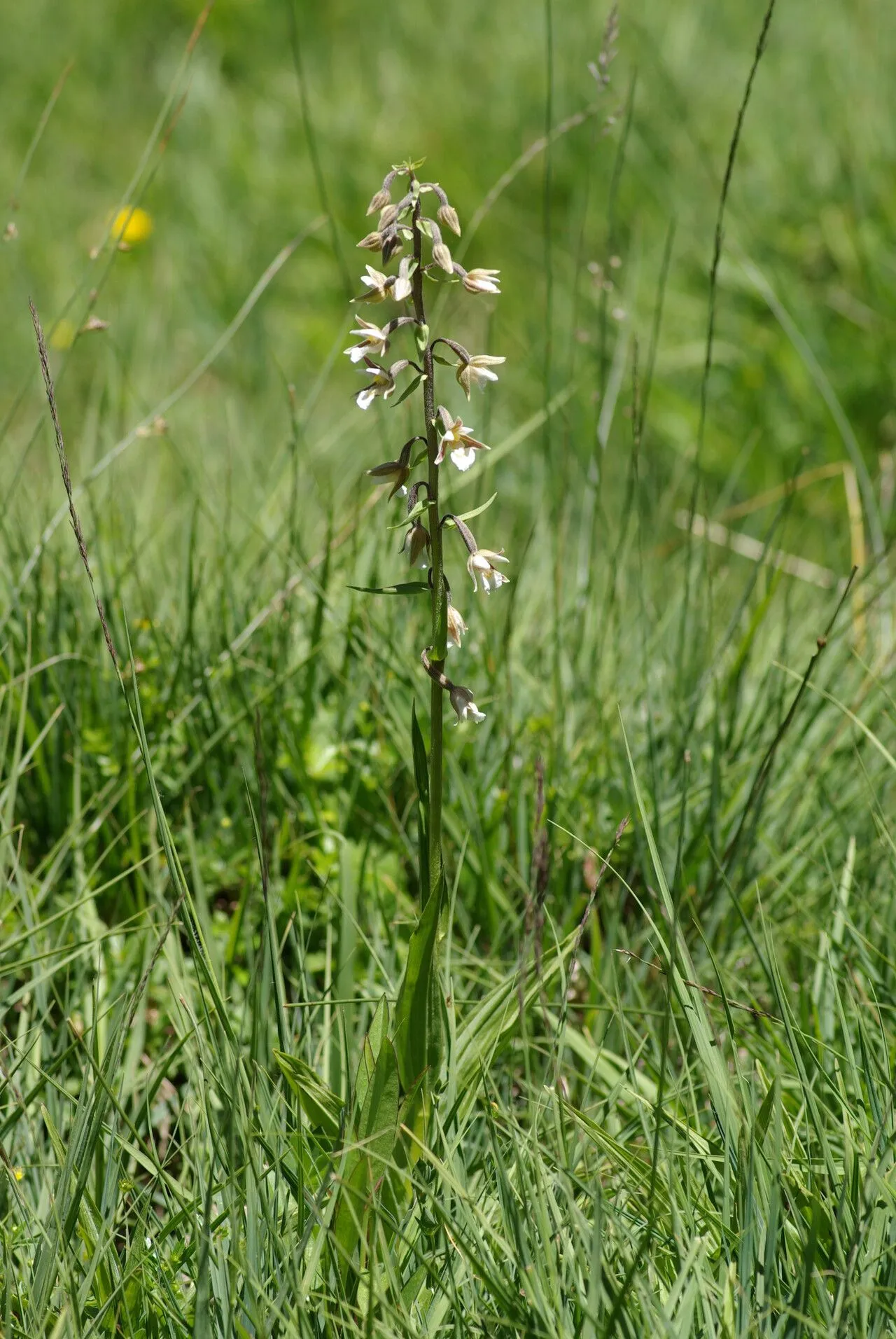
Author: (L.) Crantz
Bibliography: Stirp. Austr. Fasc., ed. 2, 2: 463 (1769)
Year: 1769
Status: accepted
Rank: species
Genus: Epipactis
Vegetable: False
Observations: Europe to Caucasus and Mongolia
The Marsh Orchid, scientifically known as Epipactis palustris, is a captivating perennial plant that stands as a testament to the intricate beauty of the Orchidaceae family. Originally documented by (L.) Crantz in the second edition of “Stirp. Austr. Fasc.” in 1769, this species has since garnered attention for its distribution and distinctive features.
The Marsh Orchid thrives in a variety of wetland habitats, extending its reach across Europe, the Caucasus, and even into Mongolia. This broad geographical spread highlights the plant’s adaptability and resilience in various climatic conditions. Typically found in marshlands, damp meadows, and wet fen environments, Epipactis palustris favors areas where it can benefit from consistent moisture.
One of the most striking characteristics of the Marsh Orchid is its delicate, slender stem adorned with lanceolate leaves that are arranged alternately. The leaves’ rich green color contrasts beautifully with the intricate flowers that bloom along the upper part of the stem. Each flower boasts a unique blend of white, pink, and purplish hues, often described as both elegant and intricate. The blossoms of Epipactis palustris not only provide visual delight but also play an essential role in the ecosystem by attracting a variety of pollinators, including bees and butterflies.
Beyond its aesthetic appeal, the Marsh Orchid holds ecological significance. It contributes to the biodiversity of wetland environments, supporting various species that rely on such habitats for their survival. The presence of Epipactis palustris can often indicate a healthy, balanced ecosystem, as this orchid species thrives in well-maintained and undisturbed wetlands.
The Marsh Orchid is not just an ornamental jewel; it also serves as a symbol of conservation efforts. Wetland habitats are increasingly under threat from human activities and climate change, making the preservation of species like Epipactis palustris crucial. Conservationists often use the health and presence of this orchid as an indicator of the overall well-being of wetland ecosystems.
In conclusion, the Marsh Orchid, Epipactis palustris, is a remarkable species that not only enriches the visual landscape with its intricate flowers but also plays a vital role in maintaining ecological balance within wetland habitats. Documented extensively since the 18th century, this orchid continues to be a subject of admiration and study, highlighting the intricate interconnections within nature and the importance of preserving our natural environments.
Nor: myrflangre
Dan: sump-hullæbe
Deu: sumpf-stendelwurz, weisse sumpfwurz
Fra: epipactis des marais
Swe: kärrknipprot, suoneidonvaippa
Eng: marsh helleborine, marsh orchid
Nld: moeraswespenorchis
Nno: myrflangre
Nob: myrflangre
Fin: suoneidonvaippa
Sme: jeaggebeaitagaš
Cym: caldrist y gors
Gla: cuaichín corraigh
Bul: блатен дремник
Ukr: коручка болотна
En: Marsh orchid, Marsh Helleborine, Marsh-Orchid
Bg: Блатен дремник
Ca: Hel·leborina dels pantans, Epipactis palustre
Zh: 新疆火烧兰
Cv: Сӳрĕк курăк
Hr: Močvarna kruščika
Cs: Kruštík bahenní
Da: Sump-Hullæbe
Nl: Moeraswespenorchis
Et: Soo-neiuvaip
Fi: Suoneidonvaippa
Fr: Epipactis des marais, Épipactis des marais, Épipactis à longues feuilles, Elleborine des marais, Helléborine des marais
De: Sumpf-Stendelwurz, Weisse Sumpfwurz, Echte Sumpfwurz, Gemeine Sumpfwurz
Hu: Mocsári nőszőfű
It: Elleborine palustre, Elleborina palustre
Kk: Батпақ жылантамыры
Lv: Purva dzeguzene
Lt: Pelkinis skiautalūpis
Se: Jeaggebeaitagaš
No: Myrflangre
Nb: Myrflangre
Nn: Myrflangre
Fa: خربقان باتلاقی
Pl: Kruszczyk błotny
Ru: Дремлик болотный
Gd: Cuaichín corraigh
Sk: Kruštík močiarny
Es: Epipactis, Heleborina de los pantanos
Sv: Kärrknipprot, Suoneidonvaippa
Uk: Коручка болотна
Cy: Caldrist y gors
Taken Nov 4, 2017 by Wolfgang Fiege (cc-by-sa)
Taken Jul 3, 2017 by Miguel A. C. (cc-by-sa)
Taken Jul 6, 2017 by Heinz Gass (cc-by-sa)
Taken Jun 27, 2014 by Alain Lagrave (cc-by-sa)
Taken Aug 2, 2019 by Eliot Collins (cc-by-sa)
Taken Jul 11, 2022 by Ola Troszczynska (cc-by-sa)
Taken Aug 16, 2021 by Frozy
Taken Feb 24, 2022 by Martin Bishop (cc-by-sa)
Taken Jul 3, 2017 by Miguel A. C. (cc-by-sa)
Taken Jul 3, 2017 by Miguel A. C. (cc-by-sa)
Taken Aug 15, 2010 by Photoflora – Benoit BOCK (©)
Taken Jul 31, 2022 by Ingrid Gruber (cc-by-sa)
Taken Aug 8, 2021 by AnneMarie Machut (cc-by-sa)
Taken Sep 10, 2021 by Francois Mansour (cc-by-sa)
Taken Jul 1, 2021 by Pierre LEON (cc-by-sa)
Taken Jun 8, 2021 by Ildikó Foldesova (cc-by-sa)
Taken Jul 8, 2021 by Isabel Sørensen (cc-by-sa)
Taken Jul 6, 2020 by Adriaan de Ruiter (cc-by-sa)
Taken Jul 22, 2020 by Klaus Menne (cc-by-sa)
Taken Jul 1, 2021 by Pierre LEON (cc-by-sa)
Taken Jul 15, 2005 by Photoflora – Benoit BOCK (©)
Taken Jul 15, 2005 by Photoflora – Benoit BOCK (©)
Taken Oct 15, 2015 by Photoflora – Corine OOSTERLEE (©)
Taken Jun 30, 1871 by Tela Botanica − Herbier PONTARLIER-MARICHAL (cc-by-sa)
Taken Jul 31, 2019 by Lc StelStek (cc-by-sa)
Taken Jul 21, 2021 by Pierre LEON (cc-by-sa)
Taken Jul 23, 2017 by Tela Botanica − Pat DESNOS (cc-by-sa)
© copyright of the Board of Trustees of the Royal Botanic Gardens, Kew.
© copyright of the Board of Trustees of the Royal Botanic Gardens, Kew.
© copyright of the Board of Trustees of the Royal Botanic Gardens, Kew.
Growth habit: Forb/herb
Ph maximum: 8.0
Ph minimum: 7.5
Light: 8
Atmospheric humidity: 8
Bloom months: [‘jun’, ‘jul’]
Soil nutriments: 2
Family: Myrtaceae Author: (F.Muell.) K.D.Hill & L.A.S.Johnson Bibliography: Telopea 6: 402 (1995) Year: 1995 Status:…
Family: Rubiaceae Author: Pierre ex A.Froehner Bibliography: Notizbl. Bot. Gart. Berlin-Dahlem 1: 237 (1897) Year:…
Family: Sapindaceae Author: Koidz. Bibliography: J. Coll. Sci. Imp. Univ. Tokyo 32(1): 38 (1911) Year:…
Family: Asteraceae Author: A.Gray Bibliography: Pacif. Railr. Rep.: 107 (1857) Year: 1857 Status: accepted Rank:…
Family: Fabaceae Author: Medik. Bibliography: Vorles. Churpfälz. Phys.-Ökon. Ges. 2: 398 (1787) Year: 1787 Status:…
Family: Aspleniaceae Author: (Cav.) Alston Bibliography: Bull. Misc. Inform. Kew 1932: 309 (1932) Year: 1932…